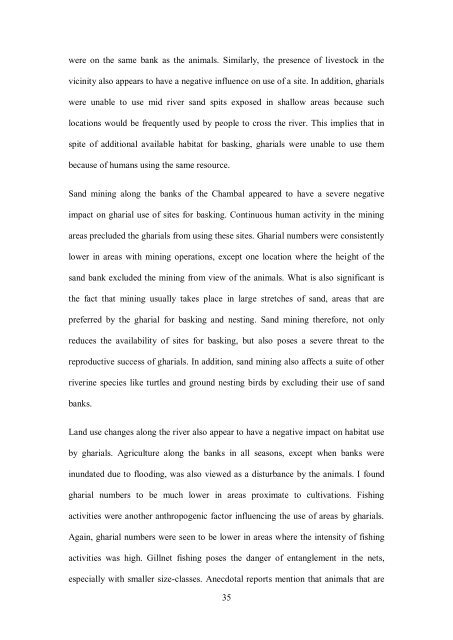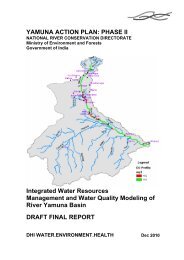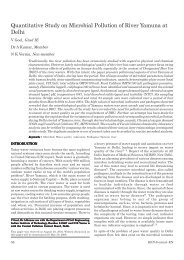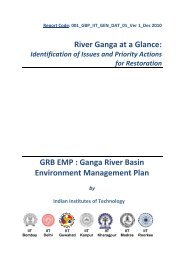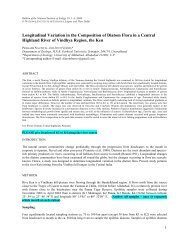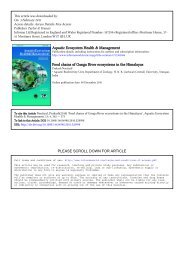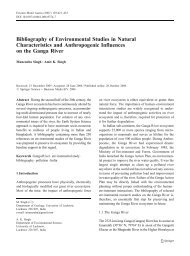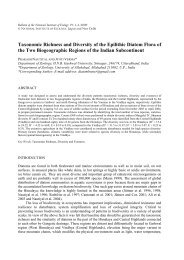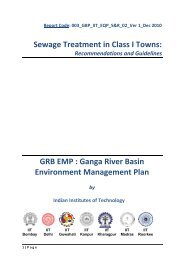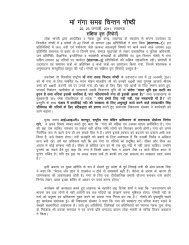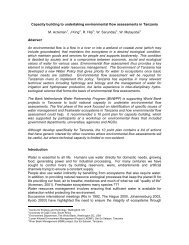Ecological and anthropogenic covariates ... - GANGAPEDIA
Ecological and anthropogenic covariates ... - GANGAPEDIA
Ecological and anthropogenic covariates ... - GANGAPEDIA
You also want an ePaper? Increase the reach of your titles
YUMPU automatically turns print PDFs into web optimized ePapers that Google loves.
were on the same bank as the animals. Similarly, the presence of livestock in the<br />
vicinity also appears to have a negative influence on use of a site. In addition, gharials<br />
were unable to use mid river s<strong>and</strong> spits exposed in shallow areas because such<br />
locations would be frequently used by people to cross the river. This implies that in<br />
spite of additional available habitat for basking, gharials were unable to use them<br />
because of humans using the same resource.<br />
S<strong>and</strong> mining along the banks of the Chambal appeared to have a severe negative<br />
impact on gharial use of sites for basking. Continuous human activity in the mining<br />
areas precluded the gharials from using these sites. Gharial numbers were consistently<br />
lower in areas with mining operations, except one location where the height of the<br />
s<strong>and</strong> bank excluded the mining from view of the animals. What is also significant is<br />
the fact that mining usually takes place in large stretches of s<strong>and</strong>, areas that are<br />
preferred by the gharial for basking <strong>and</strong> nesting. S<strong>and</strong> mining therefore, not only<br />
reduces the availability of sites for basking, but also poses a severe threat to the<br />
reproductive success of gharials. In addition, s<strong>and</strong> mining also affects a suite of other<br />
riverine species like turtles <strong>and</strong> ground nesting birds by excluding their use of s<strong>and</strong><br />
banks.<br />
L<strong>and</strong> use changes along the river also appear to have a negative impact on habitat use<br />
by gharials. Agriculture along the banks in all seasons, except when banks were<br />
inundated due to flooding, was also viewed as a disturbance by the animals. I found<br />
gharial numbers to be much lower in areas proximate to cultivations. Fishing<br />
activities were another <strong>anthropogenic</strong> factor influencing the use of areas by gharials.<br />
Again, gharial numbers were seen to be lower in areas where the intensity of fishing<br />
activities was high. Gillnet fishing poses the danger of entanglement in the nets,<br />
especially with smaller size-classes. Anecdotal reports mention that animals that are<br />
35


